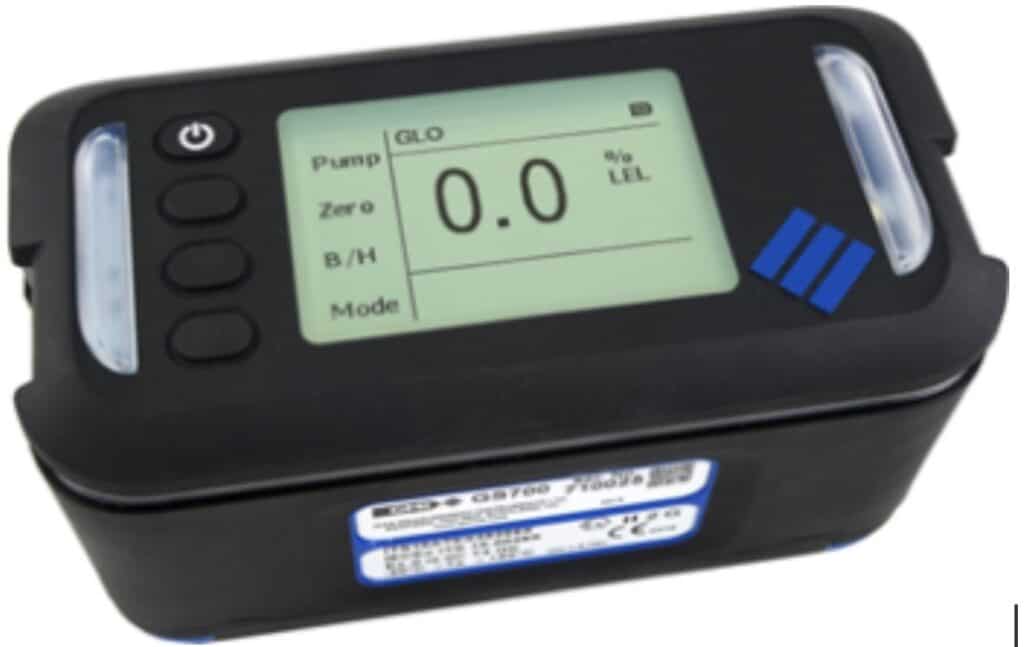Address:
Socorro NM 87801
About Us
Socorro Natural Gas Company traces its roots to the City of Socorro Gas Department, a transmission pipeline that was constructed in 1956.
Socorro Natural Gas Company serves 3323 customers, operating approximately 36 miles of transmission pipeline in Valencia and Socorro counties and 85 miles of distribution pipeline within the Socorro city limits. We also operate our own odorizer which is located in the Belen area.
Our commitment is to provide the best customer service and support. We hold ourselves to high ethical standards and stay focused on doing the right thing for our customers, our environment, our community and for each other.
As a natural gas company, we also pride ourselves on good governance and working with integrity.
Home and Business Safety
At Socorro Natural Gas Company, we put safety at the forefront of everything we do. We want our customers to think about safety as well. Learn more about how to keep your home and your business safe.
Only Socorro Natural Gas Company personnel and authorized first responders may perform work on or handle any SNGC gas meter. Unauthorized work or handling of the meter, including turning service on or off, is tampering, is dangerous, and may result in a penalty.
If You Smell Gas or Suspect a Gas Leak
Natural gas can be hazardous and must be used and treated with caution. If you smell natural gas or suspect a gas leak, don’t delay — get away! Get everyone away from the area and out of the building immediately, report the situation to 911, and then call City Hall (575)835-0240, who will dispatch Gas standby to investigate the situation. City Hall hours are Monday-Friday 8:00am-4:00pm. After hours or holidays call 911 and they will dispatch gas standby.
If you suspect a gas leak, leave immediately – don’t try to find or stop the leak. Avoid open flames. Do not smoke. Do not do anything that might cause a spark, including turning on or off any electrical or battery-operated devices or using garage door openers, radios, televisions, computers or telephones. Don’t operate any vehicle or equipment that could create a spark.
Finally, do not return to the building until Socorro Natural Gas Company safety experts have given the all-clear.
Recognizing a Gas Leak
In its natural state, natural gas is both colorless and odorless. As a safety precaution, Socorro Natural Gas Company adds an odorant to natural gas to give it a “rotten egg” odor that helps alert people to the presence of natural gas. This unpleasant odor of natural gas is for your protection in the event of a leak.
Natural gas may pose a hazard, especially if released in confined spaces. It’s important to be able to identify signs of a natural gas leak, especially the rotten egg-like odor that we add so that you can smell natural gas. You can recognize a natural gas leak in several other ways, including an unusual hissing noise, blowing dirt for no apparent reason, an unusual dry spot in the ground or dead vegetation for no apparent reason, a white cloud, mist, fog, or bubbles in standing water, and frozen ground in warm weather.
Socorro Natural Gas Company provides free Living Safely with Natural Gas brochures to help you identify important safety information on what to do if you smell gas plus more vital information. Call 1-(575)-835-2490 Gas Division at 3000 Hwy 85 Socorro NM, to request your brochure, or call (575)835-0240 to request one at City Hall 111 School of Mines.
DO NOT RELY on sense of smell alone to detect natural gas!
The sense of smell for most people is a highly reliable indicator of a natural gas release. However, continued exposure to the odorant can desensitize the sense of smell. Additionally, the smell of natural gas can be masked by other odors in the area.
In certain rare situations, the odor intensity can be diminished by physical and/or chemical processes, such as when gas passes through certain soil conditions. “Odor fade” is a phenomenon that can occur when the level of odorant is reduced or becomes ineffective for various reasons including physical or chemical processes, absorption into new piping systems, or absorption into soils, human insensitivity or inability to smell, among other things.
Exposure to the odor for even a short period of time may cause nasal fatigue, where a person can no longer smell the odor. If you suffer from loss of smell, nasal fatigue or recurrent ailments, such as colds, sinus conditions or allergies, you might have a diminished capability to detect a natural gas leak. In addition, the Center for Disease Control has identified the loss of smell as a potential symptom of exposure to the virus that causes COVID-19. Using tobacco, alcohol, medications or narcotics can lessen your ability to smell odorized gas.
Socorro Natural Gas Company encourages you to use all of your senses to determine the presence of natural gas.
Use a gas detector to help detect natural gas
Residential methane detectors, also called gas detectors, are now commercially available and are another tool to detect the presence of natural gas. Gas detectors listed by the Underwriters Laboratories (UL) can be used as an extra measure of safety for detecting the presence of natural gas. Gas detectors emit a sound when gas is present and do not depend on sense of smell. We recommend installing, per manufacturer’s instructions, residential methane detectors. These alarms must be selected and installed according to the manufacturer’s instructions. Learn more at the Gas Technology Institute.
If you suspect a leak
Remember, if you suspect a gas leak, don’t try to find or stop the leak. Get everyone away from the area or out of the building immediately, call and report the situation to 911 and then call City Hall (575)835-0240 who will dispatch Gas standby to investigate the situation. After 4:00pm weekdays or weekends or holidays call 911 and they will dispatch gas standby.
More safety information
In addition to gas detectors, smoke alarms sense smoke, which indicates a fire. Carbon monoxide detectors sound when carbon monoxide is present. In all cases, we recommend following the manufacturer’s instructions for installation and proper placement.
Excavating? Call 811 Before You Dig
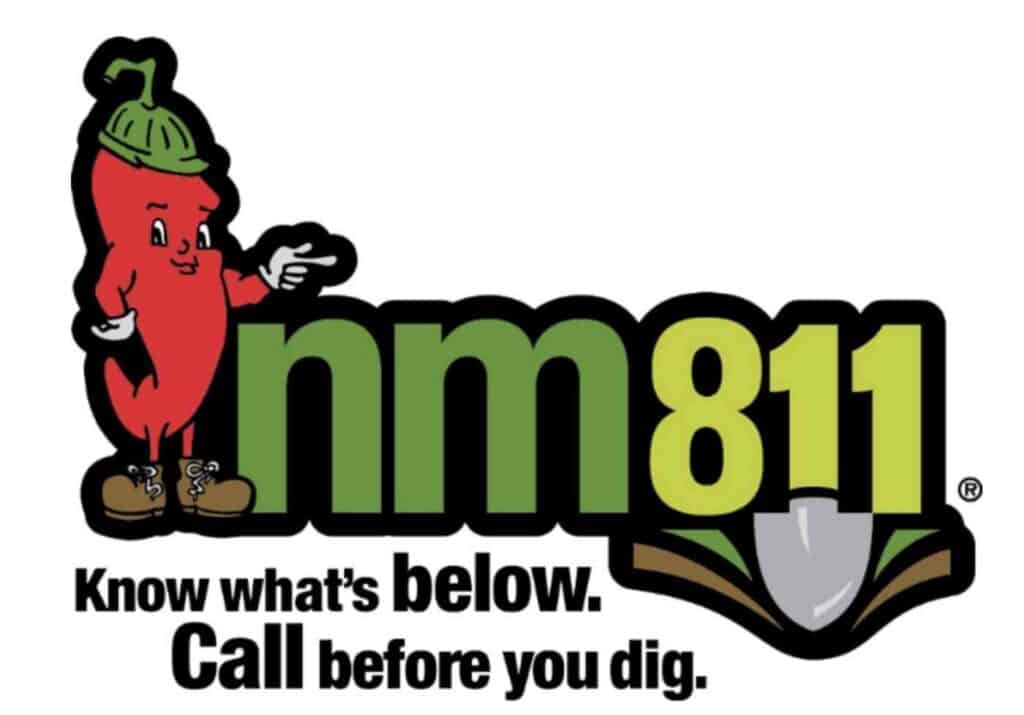
Why you should call 811
- Gas distribution lines run under streets, sidewalks and private property to bring gas to homes and businesses. These lines may be just a few inches deep due to erosion, landscaping or other activities.
- There is no way to know where a line is buried unless it is marked by a professional line spotter.
- Hitting a line can cause serious injury to yourself and others, disrupt service to an entire neighborhood and result in costly damages for which you may be liable.
- Most importantly, it’s the law!
What Happens When You Call 811
- When you call 811 at least three days before digging, utilities will come out free of charge to mark the location of their underground electric, telephone, cable, water, sewer and gas lines.
- Socorro Natural Gas Company marks its gas lines in yellow. A marking indicates the presence of a line but not its pressure or how deep it is buried.
- The markings are meant to guide your digging so that you avoid hitting underground lines.
Contact 811 by phone, or make an online request
There are two ways to request a line spot:
- Call 811. New Mexico One Call operators take routine line location requests from 7 a.m. to 5 p.m. weekdays. If yo>u have an emergency request, call (866) 344-6662.
- Make a request online. You may also request a line spot 24 hours a day by using New Mexico One Call’s web portal to fill out an online request form. Your request will be processed the following business day.
What to do if you hit a line while digging
- If you cause even minor damage to a natural gas line, immediately contact Socorro Natural Gas Company at 1(575)835-0240 OR 575-835-2490. A scrape in the line’s coating or a dent may cause a rupture or leak in the future. DO NOT attempt repairs yourself.
- If damage to a gas line results in gas escaping from the line, immediately leave the area, call 911 and then call City Hall (575)835-0240 who will then dispatch Gas standby to investigate the situation. After 4:00pm weekdays, weekends or holidays call 911 and they will dispatch gas standby.
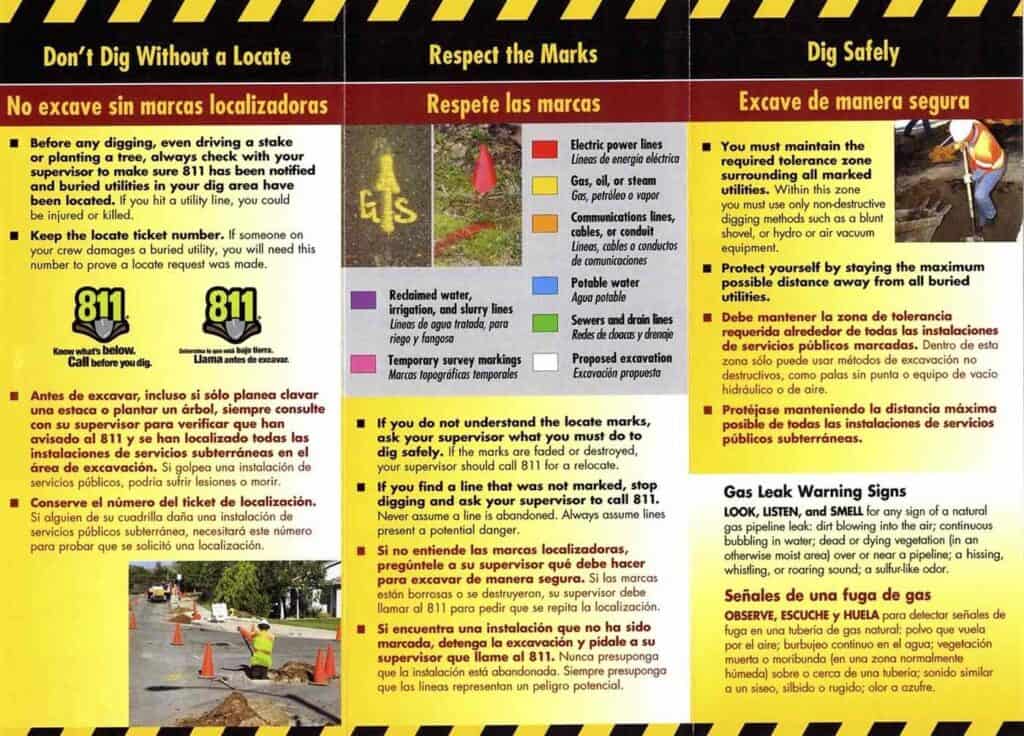
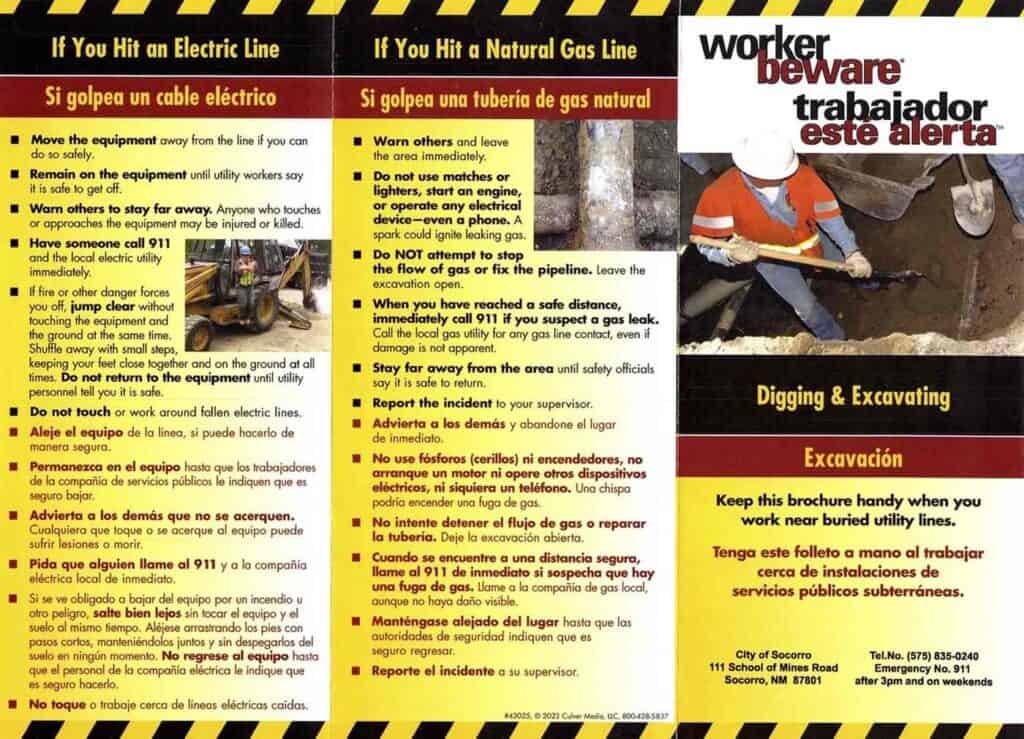
Additional Resources and Information
- American Gas Association (AGA) – www.aga.org
- 811- Know What’s Below, Call Before You Dig – www.call811.com
- Common Ground Alliance (CGA) – www.commongroundalliance.com
- Office of Pipeline Safety (OPS) – www.phmsa.dot.gov
Sewer Line Safety and Safeguards
Natural gas utilities across the country have discovered locations where natural gas pipes were inadvertently installed through sewer pipes. This doesn’t create a safety hazard so long as the natural gas pipe is undamaged. However, damage to natural gas pipes can occur when equipment is used to unclog sewer pipes. This can lead to a natural gas leak that could result in a fire or explosion, possibly causing injury or death to those who unclog the sewer pipes and to those in structures attached to the sewer pipe.
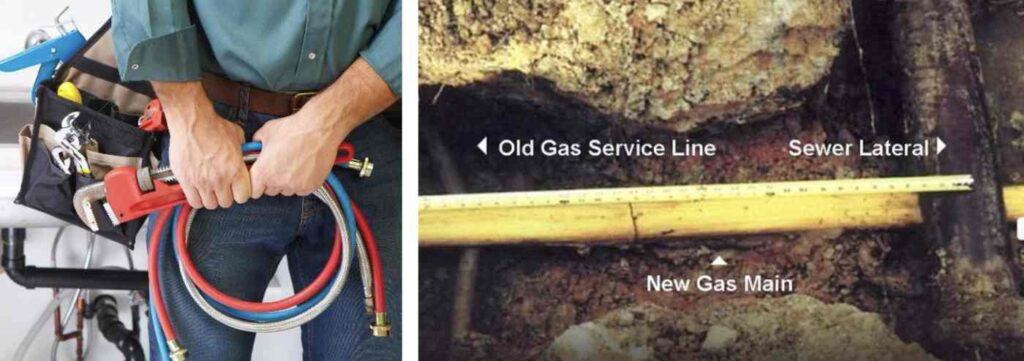
Sense a Bump? CALL IT IN!
If you or your plumber sense or see that there might be an obstruction or blockage in the sewer line connecting a house or business to the main sewer line, call Socorro City Hall at (575)835-0240. City Hall will dispatch Socorro Natural Gas Company to ensure that a gas line is not affected or damaged. There is no charge for this service.
Clogged Sewer Lines
If your sewer line does back up, the safest method of clearing the blockage is to first have all underground facilities on your property located by calling 811. If it is determined that underground facilities intersect with your sewer line, a camera should be used to visually inspect the blocked line to ensure no gas pipes, cables, or conduit exist within the sewer line.
Take immediate action if you encounter any of the following signs when you, or your plumber, clean out a sewer line with a rooter device:
- A natural gas odor at the cleanout or inside the building served by the sewer line, even if it’s faint or momentary.
- Bubbles rising through standing water or in the toilet bowl.
- Leave the area immediately and from a safe place, call 911 and 911 will dispatch SNGC gas standby immediately, day or night. A SNGC representative will be there as soon as possible.
Sewer Work Safeguards download (PDF download)
Carbon Monoxide Safety: Detectors and More
Carbon monoxide is one of the leading causes of accidental poisoning deaths in the United States. Keep yourself and your family safe by learning about the dangers of carbon monoxide, ways to reduce your risk of carbon monoxide poisoning, and what to do if you or a loved one experience symptoms of poisoning.
Sources of Carbon Monoxide
- Carbon monoxide is an odorless, invisible gas that can come from any fuel-burning appliance that is inadequately vented, poorly maintained, worn or improperly adjusted.
- It can also come from inside use of fuel-burning devices — such as grills and unvented kerosene or propane space heaters — that are not designed to be used indoors.
- Poorly maintained or blocked chimneys can also be a source of carbon monoxide.
Symptoms of Carbon Monoxide Poisoning
- Exposure to carbon monoxide can cause a range of symptoms.
- At lower exposures, symptoms can range from mild headaches, fatigue or sleepiness, shortness of breath, light headedness and nausea.
- Exposure at a higher level can lead to mental confusion, impaired judgment or memory, loss of coordination, loss of consciousness and even death.
Carbon Monoxide Alarms / Detectors
We recommend that you purchase several battery-operated CO alarms. These devices should be installed according to the instructions. The batteries should also be checked throughout the year to ensure they are properly powered. We recommend battery alarms versus others in the event that there is a power outage. You can purchase CO alarms at mostly any local hardware store.
Additional Resources
- Carbon monoxide fact sheet from the American Red Cross (PDF)
- “The Invisible Killer,” a video from the Consumer Product Safety Commission
- An Introduction to Indoor Air Quality: Carbon Monoxide, U.S. Environmental Protection Agency
Water Heater Safety
Keep your appliance safe!
Did you know that hot water is the leading cause of scald burns and admissions to hospital burn units? Most scald burns can be prevented. It is important to keep your water heater set at a recommended safe temperature in accordance with the manufacturer’s instructions.
Babies, young children under the age of five, the elderly and sick people may not be able to respond quickly when in contact with hot water and are most easily burned. It takes less than three seconds to produce a partial-thickness burn when the water temperature is 145°F. It takes much longer — about five minutes — when the water temperature is 120°F.
This lower water temperature also uses less natural gas and can help you save money. Yet this lower water temperature has not been found to present other problems for consumers, such as not having enough hot water or not cleaning clothes or dishes well.
More information is available in the flyer, Pediatric Scalds: A Burning Issue (pdf), from the American Burn Association.
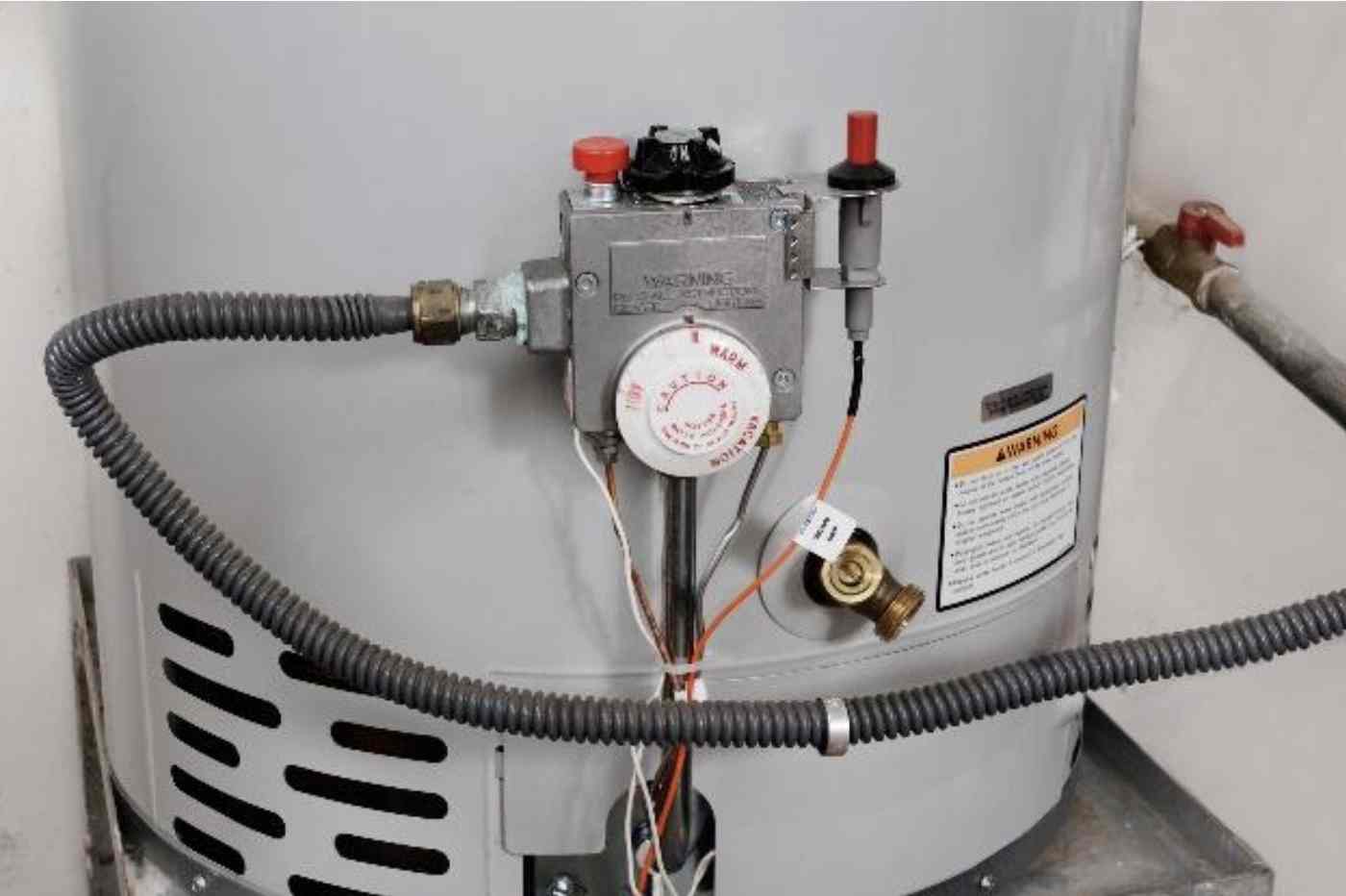
Excess Flow Valves: Know what they are!
Federal Gas Pipeline Safety Regulations, 49 CFR §192.383, require newly constructed and renewed natural gas customer service lines to be fitted with an Excess Flow Valve (“EFV”). An EFV is designed to shut off natural gas flow when the gas service line is leaking, typically from outside damage, including excavation. Automatic shut off of natural gas flow caused by unintended damage leaks is intended to protect against dangerous accumulation of natural gas into and around buildings. (£)
TYPES OF EFV INSTALLATION
1) Socorro Natural Gas Co. will install an EFV on “newly constructed and renewed” natural gas customer service lines at the time of periodic construction/renewal activities. These types of EFV installations will be performed at the discretion of the Socorro Natural Gas Co. and free of charge to the Customer with no formal request needed.
2) Socorro Natural Gas Co. will install an EFV on existing natural gas customer service lines whenever the Customer requests such installation and ONLY under the following conditions:
- The existing natural gas meter set, (with less than 1,000 SCFH flow requirement), is located at the property line, and meter relocation at the building line.
- Upon completion of construction, the new natural gas service line will become a permanent part of the Socorro Natural Gas Co. gas piping system to the outlet of the gas meter.
NOTES: Socorro Natural Gas Co. will retain final determination as to whether a customer requested EFV installation will perform as designed under Federal requirements prior to commencement of construction. A signed written Customer Requested EFV installation agreement must also be secured in order to schedule a mutually agreeable date for commencement of construction. (£) [81 FR 71001, Oct. 14, 2016; 81 FR 72739, Oct. 21, 2016]
Customers may request installation by calling Socorro Natural Gas Company (575)835-2490 or City Hall (575)835-0240.
Customer Requested EFV Installation Agreement Form 2023
Flexible Natural Gas Connectors
Flexible natural gas connectors are corrugated metal tubes that attach gas appliances to a home or building’s natural gas supply pipes. Some flexible connectors manufactured between 1970 and 1980 fail over time and need to be replaced.
- Only a qualified technician, such as a licensed plumber, HVAC or contractor, should inspect your appliances and, if necessary, replace the connectors for you. Don’t attempt to do this yourself.
- After disconnecting gas appliances, gas connectors should always be removed, and the fuel line should be plugged and capped.
- Gas pipes should be properly maintained and never used for unintended uses such as hanging clothes. These connectors are used most often with gas ranges, ovens, clothes dryers, furnaces and water heaters.
For your safety, we recommend that you contact a qualified HVAC or plumbing professional. Do not attempt to move or inspect natural gas appliances on your own. Moving an appliance even slightly could result in the connector failing and potentially creating a dangerous situation.
Corrugated Stainless Steel Tubing
Corrugated Stainless Steel Tubing (CSST) is a flexible, stainless-steel pipe used to distribute natural gas within residential, commercial and industrial structures. Coated with a yellow exterior plastic coating, CSST is usually routed beneath floors, inside interior walls and in attic spaces.
While this type of pipe is safe, it is strongly recommended that you determine if the CSST system is properly bonded and grounded. Nearby lightning strikes can result in an electrical surge and can potentially puncture a hole in the CSST. Proper bonding and grounding will reduce the risk of damage and fire from a lightning strike.
If you are unsure as to whether your home or business has CSST or whether it has been properly bonded and grounded, contact a licensed electrician to arrange for a professional inspection.
*SNGC doesn’t provide inspection service for CSST installations. Please contact your builder, contractor or a qualified professional for an evaluation.
Safety for People Living Along a Pipeline
Underground pipelines can be located anywhere. Take a look at some valuable reminders about safety along natural gas pipelines.
Pipeline Safety
Socorro Natural Gas Company is committed to the safe operation of our underground infrastructure. As part of our ongoing safety program, we work with and provide information to public officials, emergency responders, excavation and construction companies, property owners and residents.
2023 WORKER BEWARE (pdf download)
Pipeline Locations and Markers
Underground pipelines can be located anywhere!
They can be found under public roads, railroads, street intersections, open fields, and on private property. For your protection, line markers are used to indicate the pipeline’s approximate location.
Calling 811 is still required for marking the pipelines before digging.
PIPELINE MARKERS
• Are yellow
• Are typically seen where a pipeline intersects a street, highway or railway
• Are not required for all pipeline facilities
• Do not indicate the pipeline’s depth or exact location
• List emergency telephone numbers in case of a natural gas emergency
Make sure markers are left undisturbed to serve as a reminder that natural gas lines are in the area. Additionally, below-ground markers, such as yellow tape or mesh, may be present to warn excavators to the presence of buried pipe. If this below-ground marking tape is encountered, stop work immediately and call Socorro Natural Gas Company at 1-575-8350240 or (1-575-835-2490).
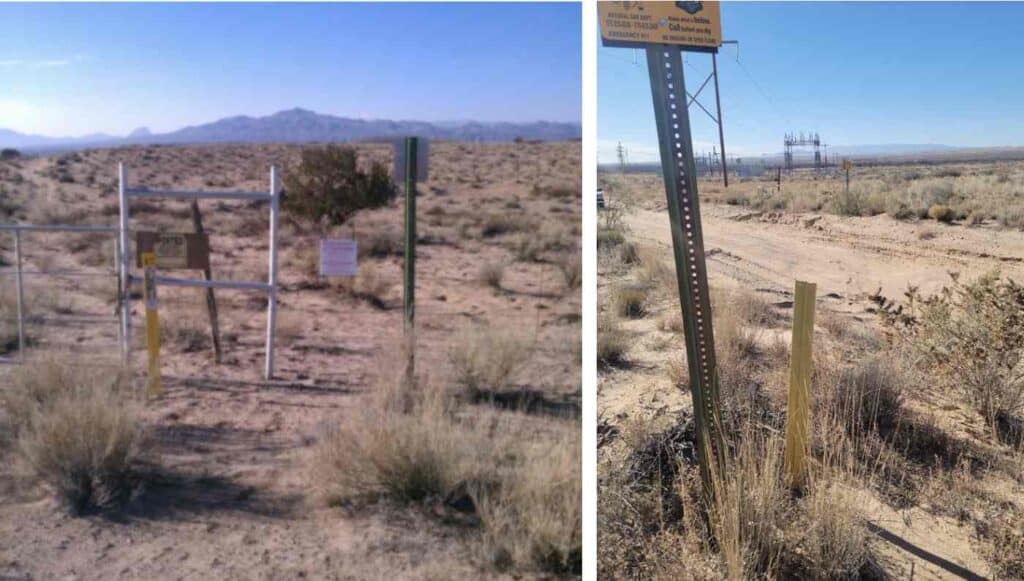
Rights of Way
While most of our pipelines run along public roads, some cross under private property. To protect the pipelines and our communities, along the pipelines we establish a path called a Right of Way where permanent structures are prohibited. The Right of Way allows Socorro Natural Gas Company to inspect, repair, maintain or replace pipeline on property that is owned by others. The Right of Way can measure 25 to 50 feet wide. Pipeline markers are often placed along the Right of Way to indicate the pipeline’s approximate location.
Right of Ways prohibit permanent structures such as:
- Houses
- Trailers
- Mobile Homes
- Poles
- Decks
- Trees
- Tool Sheds
- Garages
- Swimming Pools
- Septic Tanks
When planning landscaping near underground utilities, the right plant in the right location can enhance the natural beauty of your home and help protect the safety of your community. However, trees and plants located too close to natural gas transmission pipelines can delay emergency access for safety crews and damage pipes. Before you begin any landscaping work, always call 811 at least two business days in advance.
Pipeline Integrity Management
Ensuring the integrity of the pipeline systems we operate is a top priority to help us provide safe, reliable service to our customers. Pipeline integrity management is a process for assessing and mitigating pipeline risks to reduce the likelihood and consequences of incidents. Socorro Natural Gas Company’s Integrity Management Program (IMP) is an integral part of achieving this goal and complying with laws and regulations. We have implemented IMP for distribution and transmission facilities.
Steps in the Distribution Integrity Management Program (DIMP) include:
- Threat Identification and Risk Analysis — We analyze pipeline segments to identify threats to the pipeline as well as the public safety and environmental consequences of a pipeline failure to assess the total risk.
- Risk Mitigation — We develop programs or activities to address the risk.
- Performance Measurement & Effectiveness Evaluation — We evaluate the performance and effectiveness of programs and activities to determine if changes are warranted.
- Periodic Evaluation — We evaluate the Integrity Management Program for areas of success. We identify areas on our distribution system where improvements can be made. And we incorporate these improvements into ongoing safety initiatives.
Steps in the Transmission Integrity Management Program (TIMP) include:
- High Consequence Area Identification — Locations along the pipeline system meeting the criteria for High Consequence Areas (HCAs) are identified. Generally, these are high population density areas, difficult to evacuate facilities, such as hospitals or schools, and locations where people gather, such as churches, office buildings or ball fields.
- Threat identification and Risk Analysis – We analyze individual pipeline segments to identify threats to the pipeline as well as the public safety and environmental consequences of a pipeline failure to assess the total risk.
- Integrity assessment – The pipe segments are assessed according to the schedule and methods identified in the Baseline Assessment Plan. There are three primary assessment methods:
- Inline inspection – an inspection tool, often called a “smart pig,” is run through the pipeline to evaluate the pipe condition.
- Direct Assessment – a structured, multi-step evaluation is conducted to identify potential problem areas. Pipe at these locations is excavated and examined.
- Pressure test – the pipe is pressured above its normal operating limit to test the strength of the pipe. Water is usually used to pressure the pipe during the test.
- Remediation – We investigate and repair issues identified during the integrity assessment step to ensure continued safe operations.
- Preventive and mitigating measures – Along with performing the integrity assessments on pipe segments, the process calls for implementing additional measures to prevent or mitigate problems before they occur.
- Stand-By Excavation Monitor is required when an excavator is digging in the Right of Way of transmission, high-pressure and large diameter pipeline.
- Remote Shut-Off Valve Installation.
- Extra patrols along the pipeline.
- Continual evaluation and assessment – A continuing plan to evaluate the integrity of the pipeline after completing the baseline assessment is also part of the process. The ongoing plan includes reviewing updated information about the pipe, analyzing risk and performing regular reassessments.
- Performance Measurement & Effectiveness Evaluation — We evaluate the performance and effectiveness of programs and activities to determine if changes are warranted.
Maps: Pipes and Where to Find Them
The SNGC service territory map provides general locations of our transmission pipelines. Lower pressure distribution mains and service lines connected to the gas meter at homes and businesses are not shown.
To locate natural gas transmission lines operated by SNGC and other companies, visit the U.S. Department of Transportation’s Pipeline Mapping System (NPMS) website.
National Pipeline Mapping System (NPMS website)
Corrosion Control: Protecting Our Steel Pipes
Corrosion is a natural process where metal degrades into oxide as part of a reaction with the environment. To protect pipelines from corrosion, both external and atmospheric, we use pipeline coatings and cathodic protection (CP).
- Pipeline coatings are the most common anti-corrosion treatment. They work by providing a barrier of corrosion-resistant material between the damaging environment and the steel.
- CP is a technique used to control the corrosion of a metal surface by making it the cathode of an electrochemical cell. A simple method of protection connects the metal to be protected to a more easily corroded “sacrificial metal” which acts as the anode. The sacrificial metal then corrodes instead of the protected metal. For long pipelines, where passive galvanic cathodic protection is not adequate, an external DC electrical power source is used to provide the current.
SNGC employees monitor all cathodically protected steel pipe every year to confirm the cathodic protection system is functioning properly.
Advanced Mobile Leak Detection
Socorro Natural Gas Company uses a special tool in our ongoing efforts to keep neighborhoods safe. It’s an ATV outfitted with an innovative Heath Detecto Pak-Infrared+ (DP-IR+™) The DP-IR+ is the latest generation of leak survey instruments from Heath that will greatly improve the productivity and safety of a walking/ mobile survey because of high sensitivity and fast response. It is an extremely sensitive, advanced leak detector capable of detecting methane without false alarming on other gases. The DP-IR+ operates under a variety of environmental conditions including cold or hot weather. Its rugged design will stand up to normal field use and operating conditions.
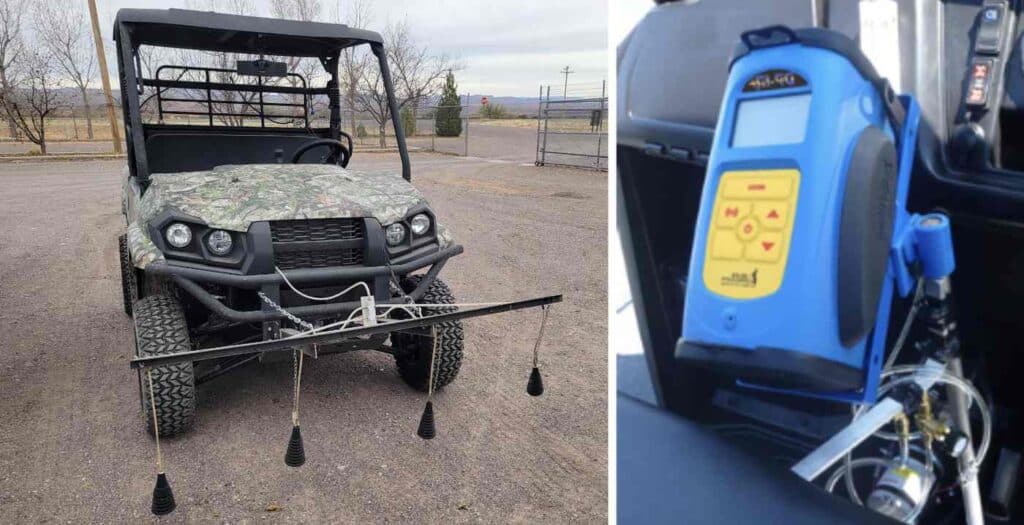
Based in Socorro, this vehicle can survey areas during precautionary sweeps or head to locations where the smell of natural gas has been reported or a leak is suspected. As it drives along, sophisticated sensors check for leaks or damage. If a leak is confirmed, our crews will respond quickly to make repairs.
Gasurveyor 700 Multi-Gas Detectors
The Gasurveyor 700 series is a highly configurable, user-friendly, infrared gas detection device suitable for all gas utility applications. The natural gas discrimination feature allows us to quickly determine the source of the gas, whether it’s a pipeline gas leak or naturally occurring biogas; saving time and reducing detection related costs. The Gasurveyor offers data-logging functionality with optional GPS mapping to simplify data gathering. The cloud-based Instrument Management System (IMS) provides access to field usage reports, calibration history, investigation mapping and more.
